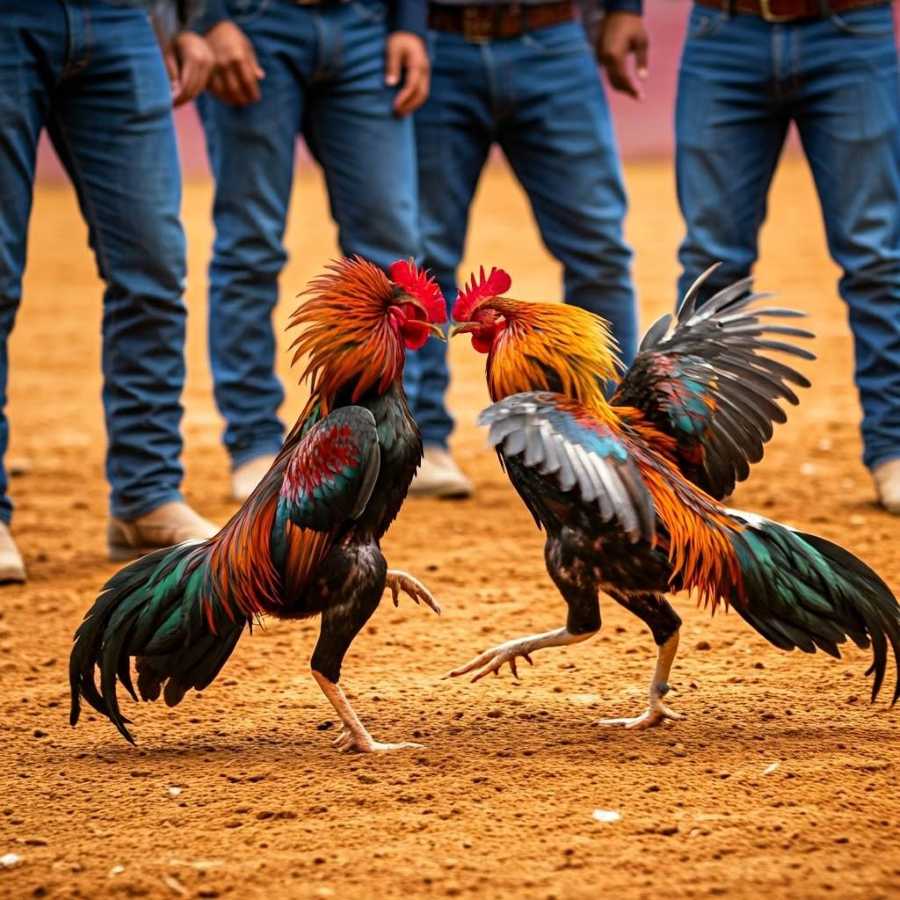Yucatan Clinging to Cruel Cockfight, Bullfight Traditions
In Yucatan, traditional cockfighting and bullfighting events spark intense debate between proponents citing culture and economic benefits, and opponents highlighting animal cruelty and the negative psychological impact on children.

It’s a Friday night, like any other Friday night here in Kanasín, and the faithful are gathering. Not for vespers, mind you, but for something far more primal, far more… profitable. Inside the palenque, the cockfighting arena, the noise is already building – a low murmur that will soon crescendo into a roar of shouts, cheers, and the frantic flapping of wings. This, in the Yucatán, is culture. This is tradition. And for a select few, this is serious money.
Because here, in this corner of Mexico where the ancient Mayan spirit still whispers on the breeze, the old ways die hard. And few ways are older, or more deeply ingrained, than pitting two specially bred, razor-spurred birds against each other in a fight to the death for the amusement and enrichment of men.
They call them "deportes", these blood spectacles – cockfighting and, in its own brutal fashion, bullfighting. Sports. As if the sheer, unadulterated violence, the deliberate cultivation of aggression, the cold calculus of the wager, could ever be described by such a clean, wholesome word. But then again, language is a funny thing, isn't it? It can be twisted, redefined, employed as a shield against uncomfortable truths. Like the truth that what happens in these arenas is, at its heart, about control, dominance, and a chilling indifference to suffering.
It’s a scene that repeats itself endlessly across the state. Every Friday in Kanasín, the roosters are readied. Bets are placed with a speed and intensity that would make a Wall Street trader blush. Fortunes, small and not-so-small, change hands in the blink of an eye, or the fatal thrust of a gaff. It's a world where lineage matters, not yours, but the bird's. Where conditioning is paramount, a carefully guarded secret passed down through generations. Where the only thing that matters is whether your feathered warrior has the grit, the killer instinct, to outlast and dispatch its opponent.
And it's not just Kanasín. Tekax, Seyé, and countless other municipalities where the tradition, and the business, thrives. The sheer ubiquity speaks volumes. This isn't some fringe activity relegated to the shadows; it's woven into the fabric of local life, supported, tacitly or explicitly, by communities and, yes, by politicians.
The politicians. Always the politicians. Because where there's money and popular support, however morally questionable the source, there are men in suits looking to harness it, or at least not alienate it. Ediel Broca Jiménez, identified as the legal representative of the National Action Party (PAN) in Kanasín, speaks of the need for regulation, for ensuring "order," for preventing these events from becoming breeding grounds for other illicit activities. Acknowledge the problem just enough to appear concerned, while carefully avoiding anything that might actually disrupt the lucrative status quo. The goal, it seems, isn't to eradicate the practice, but to sanitize it just enough to appease the growing chorus of critics.
Because the critics are growing. Animal protection groups having "considerable influence," are pushing back. They argue, quite rightly, that these aren't sports; they are acts of cruelty. They point to the inherent suffering, the deliberate infliction of pain and death for entertainment and profit. Their recommendation is stark, and in the context of Yucatán's deep-seated traditions, perhaps a bridge too far for many: prohibit these spectacles entirely.
The debate, as these debates always do, quickly devolves into a clash of values. Proponents lean heavily on the idea of "cultural patrimony," of a historical right to engage in practices passed down through generations. They talk about the economic benefits, the jobs created, the money circulated. They talk about identity, about what it means to be Yucatecan.
But what about the other side of the coin? What about the impact on children? Psychologists warn of the desensitization to violence, the normalization of aggression, the potential link between witnessing such brutality and future behavioral problems. It’s a chilling thought: that the cultural inheritance being passed down isn't just about roosters and rings, but about a learned indifference to suffering, a casual acceptance of cruelty.
Dr. Cynthia Yamile Arriaga Durán and Dr. Sol Xool Canul, identified as psychologists, speak of the "normalization of violence," the learning of "pro-violent values and skills." They suggest that children exposed to these events learn to resolve conflicts through aggression, mirroring the brutal outcomes in the arena. It's a heavy indictment, suggesting that these "cultural" events are actively harmful to the psychological development of the young.
The legal situation, predictably, is a tangled mess. While federal law and state animal protection statutes exist, there appear to be loopholes, contradictions, and, perhaps most significantly, a lack of political will for strict enforcement when it comes to these particular practices. Article 41 of the state's animal protection law, we are told, explicitly excludes bullfighting and cockfighting from its purview, essentially granting them a legal pass on cruelty charges. Municipal regulations might exist, but the overarching legal framework, at least as described here, seems designed more to protect the practices than the animals involved.
There's a proposed reform by the Green Ecologist Party – an attempt to bring these practices under the umbrella of animal protection law, to classify them unequivocally as acts of cruelty and prohibit them. But the path to reform, in a place where tradition holds such sway and vested interests run deep, is long and fraught. Modifications are needed to local laws. A simple enough phrase, but one that hides a world of political maneuvering, resistance, and the slow, grinding work of trying to shift deeply entrenched cultural norms.
And so, the Friday nights in Kanasín continue. The blood flows, the bets are tallied, and the arguments rage on. Is it culture or cruelty? Tradition or barbarism? Entertainment or a disturbing window into the darker impulses of human nature?
Perhaps the truth, as always, lies somewhere in the messy, uncomfortable middle. It is, undeniably, a part of Yucatán's history, a practice with roots stretching back centuries. But the world changes. Our understanding of animal sentience evolves. The psychological impact of violence on communities, particularly on children, becomes clearer.
Standing outside the palenque as the sounds of the fights drift out, one is left to ponder. Are these spectacles truly worth the cost? The cost to the animals, undoubtedly. The potential cost to the children who witness them. And perhaps, in a less tangible but no less significant way, the cost to a society that clings to practices that feel increasingly out of step with a more compassionate world. The roosters fight until one falls, or flees. The bulls are tormented, then killed. And the people watch, bet, and argue about what it all means. It's a messy, complex tableau, steeped in tradition and stained with blood, a microcosm of the enduring struggle between the past and the future in this sun-drenched, complicated corner of Mexico.




